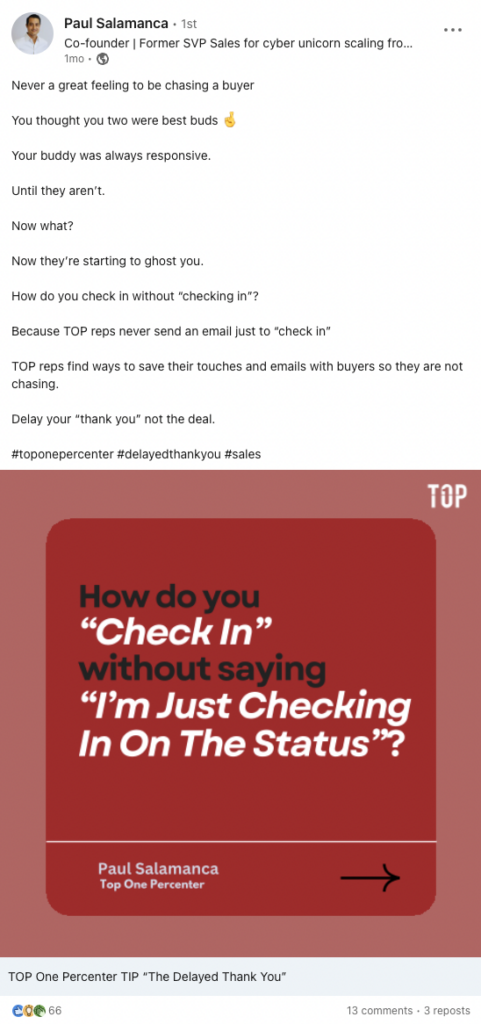3 Sales Mistakes Costing You 98% Of Your Leads & How To Fix Them

A recent FPS study found that companies, on average, spend between $150 and $500 per lead. Yet only 2% to 5% of prospects ever convert.
Have you ever noticed that your budget seems to drain faster than your leads convert? You’re not the only one. And now consider the fact that some companies can cough up as much as $5,000 per prospect.
You can’t afford to bleed money like that – not if you want to keep your reps employed and the company afloat. But it’s not the sales team that’s to blame. It’s your strategy.
Join us as we discuss some of the simple changes you can make to your sales team strategies to increase conversion rates and improve spending efficiency.
6 Reasons Why Even the Most Promising Leads Go Dark
Are rather straightforward. The 6 most common reasons why even promising leads go dark include:
- Poor Product-to-Lead Fit: If your marketing team doesn’t sufficiently verify a prospect or makes a mistake during qualification, it can result in an unfit MQL. A business that doesn’t want or need you will ghost as soon as your sales team reaches out.
- Lack of Value: If your sales team can’t sufficiently explain why a lead should invest in your solution, they’ll go dark. At CloudTalk, we learned this the hard way when we tried pushing a vast number of features while all our prospects wanted were actionable benefits.
- Bad Timing: Regardless of how good of a fit a lead may be for your product or service, they won’t convert if the timing’s not right. This applies both at the macro and micro level.
- Macro: If you push a prospect while they lack sufficient awareness or resources, you’ll lose them.
- Micro: If your sales team can’t adapt to the lead’s unique requirements regarding time zones or scheduling, you’ll lose them.
- Macro: If you push a prospect while they lack sufficient awareness or resources, you’ll lose them.
- No Urgency: At the same time, you can’t afford to wait too long. If sales can’t create a sense of urgency, leads may feel content to hold off on buying, which usually means no purchase at all. Perseverance, FOMO, and value are your best friends here.
- Organizational and Budget Changes: Your prospect’s means, needs, and goals may change as they progress through your sales funnel. And just like that, they’re gone.
You may notice that that’s only 5 of the 6 reasons we promised. That’s because the sixth – sales team error deserves a section all to itself. Before we get to that, we need to add some complexity to this equation and consider…
Why Leads Go Dark at Different Stages of the Funnel
Not all prospects are created equal. Leads have different motivations, depending on their stage in your sales funnel, if they’re an MQL, SQL, or SQO, and whether they’re part of your inbound or outbound pipeline.
Inbound vs. Outbound
The obvious differences between the two channels are awareness and intent. By the time your sales team gets to an inbound lead, they’ve already interacted with some of your content and taken steps to qualify as a viable prospect.
With awareness and intent out of the way, that only leaves the rep with 4 opportunities to mess up converting your prospect.
Meanwhile, outbound leads start from scratch. Since your sales team employs cold contact strategies, they have to go through the whole process of building awareness, qualifying potential, and creating motivation.
So, a lead may go dark due to any of the 6 reasons explained above.
Consequently, your odds of converting an inbound lead (14-30%) are much higher than an outbound one (1-3%).
MQL vs. SQL vs. SQO
Growing companies often stumble into the pitfall of taking qualification at face value and not differentiating further. However, MQLs, SQLs, and SQOs require very different approaches to move further down the sales funnel.
Similar to how inbound and outbound leads behave, SQLs and SQOs have the resources, awareness, and motivation to convert. Therefore, they need a push, or they’re likely to go dark due to bad timing, no urgency, or organizational/budget changes.
However, the opposite is true for MQLs. Creating pressure is more likely to scare these leads away. So, your sales team needs to focus on nurturing – gently nudging them forward by organically building awareness and motivation using value-based propositions.
On average, only 13% of MQLs ever become SQLs. There’s clearly a problem here.
How You’re Scaring Leads Away At Every Stage Of The Sales Funnel
Leads have different needs and expectations at different stages of the sales funnel. Failing to understand, anticipate, and address these will always result in failure. Here’s what to consider.

- Early Stage:
Your pre-awareness and awareness phases of the buyer’s journey tend to see the most “traffic”. Potential prospects come and go, most often without saying a word (only 2% of cold calls ever get answered), because at this point, they’re at most window-shoppers.
Your best shot at pushing a lead forward is by providing enough value at the right time. Meanwhile, the most common reasons for ghosting at this stage are a poor fit, lack of value, bad timing at the macro level, and sales team error. - Mid Stage:
Your first contact/conversion events along the buyer’s journey exemplify the research and buying phases. In inbound, this can be signing up for a newsletter, while in outbound, it can include the prospect’s first sales call, product demo, or otherwise.
At this point, your leads have some concept of your value but aren’t fully convinced yet. Your best odds of further conversion are proper qualification and value-based personalization.
Most fall-off is the result of a lack of value, bad timing, no urgency, organizational/budget changes, and sales team error. In fact, 67% of lost leads go dark due to poor lead qualification in the mid-stage. - Late Stage:
What makes ghosting during the action/purchase phase so heartbreaking is that the deal was looking so promising. You’ve had your prospect sign up for a free trial or attend several sales and strategy calls, and now they disappear?
If your sales team played its cards right, the lead already understood your value, was a good fit, and wanted to buy.
Unfortunately, you most likely lost them due to a sales team error, organizational/budget changes, or no urgency (80% of lost leads go dark because the seller gives up too early).
There are only three reasons why an organization will make a purchase. They’re either in trouble right now, they see trouble coming, or an individual or group wants to be a hero and get ahead of something.
– Doug Adamic, CRO at BREX
There are two questions you should be asking yourself at this point. First, what could your sales team do differently? And second, what can YOU do to address the issue?
Expert Advice On How To Consistently Close Leads In Your Niche
We’ve teased the topic for long enough. Let’s discuss the 3 errors your sales team may be making that lead to ghosting and cost you revenue.
1. Misunderstanding Your ICP:
We’ve all probably heard and read more about ICPs than we’d want or need. Or, at least, that’s what we thought at CloudTalk. Yet when it came to our sales, our conversion rates were still down.
We revisited our data to find out why, and our jaws promptly hit the floor. We had better win rates for non-ICP prospects than our actual ICPs.
What I think is broken about so many sales organizations nowadays is that they’re still trying to sell like they’re in control of the process. But the truth is, they’re not. The buyer is in charge of the process, and it’s much more about buyer enablement than it is about selling anything.
– Zach Lawryk, Head of Global Solutions Consulting at Rippling
At CloudTalk, we didn’t consider that customers don’t always interact with your products as you intend or expect them to. In that way, we failed our sales team. But our sales team could have realized this discrepancy sooner.
And so, we urge you to learn from our mistakes, prioritize long-term open communication with prospects and existing customers, and ensure your sales team doesn’t annoy leads with a fundamental misunderstanding of their needs and expectations.
2. Mistaking Glitter for Gold
It wasn’t only that we misunderstood our prospects. The real issue was that CloudTalk failed to correctly communicate the true value of our product to our sales team, which lead to inaccurate qualifications and pitches that completely missed the mark.
Here’s a practical example. We know that CloudTalk is a next-gen business-calling software connecting teams, customers, and tools in the cloud.
Our value is in automating and streamlining call operations to enable sales and support teams to do their best work. This allows businesses to customize their user journey and increase customer satisfaction.
But we didn’t sell it like that. Instead, our sales team sold “call center software” that could offer over 75 different features, 35 integrations, and 160 international numbers. And those numbers are nice. It’s just too bad they don’t tell the prospect anything.
In his recent 20Sales interview, Zach Lawryk explained the importance of sales engineers – a hybrid sales/product position whose primary objective is to get a complex understanding of your solution and relate it to your prospects.
Nowadays, there are two reasons to involve sales engineers in the (sales) process. One is if you’re offering a highly technical product and can’t expect the account manager to have full expertise. The other is if you’re competing with a company which has them already.
– Zach Lawryk, Head of Global Solutions Consulting at Rippling
The takeaway here is that you need to make sure you understand why your product is valuable (which challenges it targets, whether they’re pain points for your ICP, and how significant) or nurture/hire someone who can find out.
3. Pushing Too Little Or Too Much
Urgency is sales’ greatest balancing act. Have your reps push too little or too late, and the prospect is gone. But chase the lead too hard too often, and the result is the same.
It’s not difficult to see why this is a common cause of lost deals. Sales reps have to juggle multiple leads at the same time. And in a high-pressure environment, sales reps usually struggle with time and priority management.
The result is that a sales rep may try to close a deal too fast to make room for others or have a particularly slow prospect get lost in the shuffle. But how do you fix these sorts of problems?
Going by Doug Adamic’s interview, the issue lies in getting the team to play by the rules. You need to explain that doing so will allow them to make “more trips to the bank to make more money”. In other words, close more deals more efficiently to get more compensation.
But to do that, you first need to have the rules written down in a sales playbook.
If you don’t have one, this is your sign to start creating it. And if you do, you should revisit the guidelines for first response and re-engagement time frames, as well as minimum engagement attempts.
According to Xoombi, responding within 1-minute can boost conversion rates by 391%. Meanwhile, a 30-minute response time has a 62% chance of success, and 1 day only around 17%.
If you don’t want to annoy your customers with poor timing and urgency, ask them about their experiences. Then, identify an ideal amount of touch points, include it in your guidelines, and get reps to play by the book.
See? The issue really doesn’t have to be your sales team but rather your strategies. We were in the same boat a little while ago. Thankfully we found a few ways to fix that. And now, we’ll share them with you.
6 Re-Engagement Strategies You’re (Probably) Not Using
1. The “Delayed Thank You” Method
Paul Salamanca explained his approach to getting leads to respond without any chasing necessary.

Imagine this scenario:
It’s Monday. A prospect emails your rep saying they’ll get you the redlines to them by Thursday. Naturally, they reply with, “Sounds great!”. But the day comes and…nothing.
“Checking in” at this stage will transform the rep from a kindred spirit to nothing more than a salesperson and might leave a bad taste in the lead’s mouth. So, what to do?
To avoid this in the future, teach your sales team to practice patience. Instead of replying right away, get them to wait until Thursday and use their “Thank-You” email as a way to keep the lead accountable and stay top-of-mind.
For added flair, they can also change the “what” to “when” by including a time limit.
Here’s an example:
Thank you for the email (x). I look forward to receiving the redlines today. Sending them over by 2 p.m. would let us gather the counsel and review them for you by the end of the day. How does that sound?”
– Your Amazing Sales Rep
2. The 3 Re’s
Did you know that 60% of sales execs never conduct lead exit interviews? But if you had some interaction with a lost lead, you can leverage the 3 Re’s strategy to either REvitalize the deal or at least turn it into a viable data point. It goes like this:
- REvisit the Conversation: Have your rep think back to their last conversation with the prospect and brainstorm ways to restart the conversation in a way that’ll have them remember who you are.
- REframe from Sales to Service: If the sales rep manages to get through, have them ask the prospect about their reasons for dropping out.
- REquest a Specific Reason: Once they give the rep a specific reason for going dark, they’ve essentially outlined a roadmap to converting them. Leverage this insight to reopen their deal or use it to do better in the future.
3. Remove the “No” Anxiety
A frequent reason why leads go dark is that they’re afraid of saying “No” to a sales rep because they’re afraid of conflict. This costs you the deal and any potential insights you may have gotten from the rejection, too.
By having your sales team focus on buyer enablement rather than selling and highlighting the prospect’s needs above all, you can remove this “No” anxiety.
Here are a few tips:
- Help the lead understand their needs;
- Objectively assess whether they’re a good fit for your product;
- Provide value without necessarily expecting anything in return.
The additional information will allow your sales team to improve their future approach and also open up the lead for future re-engagement.
4. Send A Drip Campaign
A mistake many sales teams make is when a prospect tells them “they’re not ready yet”, they let them off the hook. However, there was a reason why this person was looking at your company. Odds are that whatever issue prompted them to do so may reappear.
When that happens, you want to be top-of-mind instead of a competitor. You guarantee that by keeping them engaged in your pipeline with a content drip.
This includes resources that explain the business impact of their issue, the value your product offers, and other tips your ICP would find valuable.
If they don’t, they never were your ICP to begin with. But if they do, you’ve just gotten more value from your existing marketing materials and secured more revenue.
5. Diversify Long-Term Touchpoints
Similarly, if your sales team finds itself losing leads who are interested but not ready to take action yet, you can incorporate a multichannel engagement strategy. In other words, reaching out via email, phone, SM, video messages, and even direct mail.
The channels you choose should depend on the prospect’s previous interactions.

According to Gartner, sending 2-3 messages across multiple channels simultaneously improves the chances of a response by 13%. This strategy works best when employed on a 13-day, triple-touchpoint basis.
6. Multi-Thread
If a multi-channel sales approach doesn’t keep your leads warm, then a multi-person one may. Recently, we’ve spoken about how we keep win rates consistently above 35% with multi-threading.
As opposed to single-threading, i.e., communicating with only one person, this approach involves multiple stakeholders from the prospect’s company to ensure continuous communication, better odds of conversion, and shorter sales cycles.

However, achieving these results takes some effort. You’ll have to:
- Invest in reliable conferencing tools to make sure your messaging lands;
- Find ways to maintain engagement (i.e., encourage face-cams);
- Set the right tone from the start;
- Qualify through genuine curiosity;
- Implement the changes to team communications, not just prospects.
We covered how to tackle each of these in our last article on Keeping Win Rates Above 35% With Multi-Threading. So, if you’re interested in learning more, we wholly encourage you to give it a read.
Know When To Stop
Our advice is simple – don’t spend more money chasing a prospect than they’re worth. If the potential deal size can’t cover its costs, let alone result in profit, it’s best to save your sales team’s energy for something else.
Know when to stop. Like us. Right here.
Sources:
- FirstPageSage: Average Cost Per Lead By Industry In 2023
- EngageTech: Marketing Conversion Rates Benchmarks
- ChilliPiper: Conversion Rate Benchmarks
- Klipfolio: MQL to SQL Conversion Rates
- Lusha: Cold Calling Statistics
- Spotio: Sales Statistics
- 20Sales: What Is Sales Engineering w/ Zach Lawryk
- 20Sales: Why Everyone Is Responsible for Demand Generation w/ Doug Adamic
- Xoombi: Speed Is The Key To Lead Generation
- Mthink: Winning Back Lost Customers: Who Do You “Woo” And How?
- Gartner: How To Re-Engage Cold Leads
- CloudTalk: Keep Win Rates Above 35% With This Seldom Used Sales Strategy
























